Which Type of Landscape Photography Is For You? (Choose From 21 Types!)
Landscape Subject
The first decision you’ll need to make is what subject you want to concentrate on.
There are lots of different subjects you could approach, below you’ll see a summary of these.
You could choose more than one subject and use a single photographic technique to portray it.
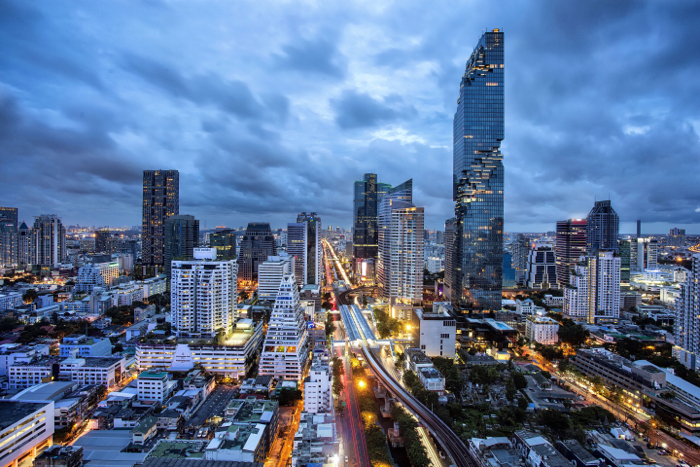
1 – Urban
This is an exciting area of photography for many photographers. Not least because it’s likely you already live in, or near a big urban centre.
The larger the city you’re photographing, the more interesting it will be. Bigger cities tend to have the type of architecture you’ll want to photograph.
Urban landscape photography can roughly be divided into three sub-categories.
- Cityscape – This type of photo aims to show a large part of the city. It needs to give a sense of scale to the place. You’re looking for a vantage point, and you’ll use a wide angle lens for this. Look for accessible tall buildings, or a hill overlooking the city for this.
- Urbex – This entails photographing abandoned buildings, or accessing underground tunnel systems. Urbex stands for urban exploration. Look to take gritty photos, in interesting locations. Urbex can be dangerous though, so make sure you stay safe.
- Architecture – Stunning architecture is a staple of urban photography. Look for new buildings, statues or bridges for this.
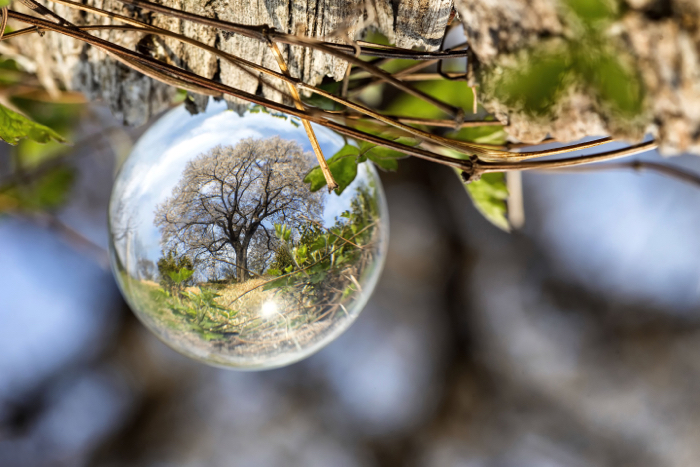
2 – Nature
At the other end of the scale to urban photography is nature photography. In this case the more remote you can go, the more stunning the landscape is likely to be.
You can always find amazing natural locations you can reach by driving your car. But chances are you’ll be taking a photo like those taken by many other people.
The true wilderness will reward you. Think deserts, mountain ranges or even volcanos.
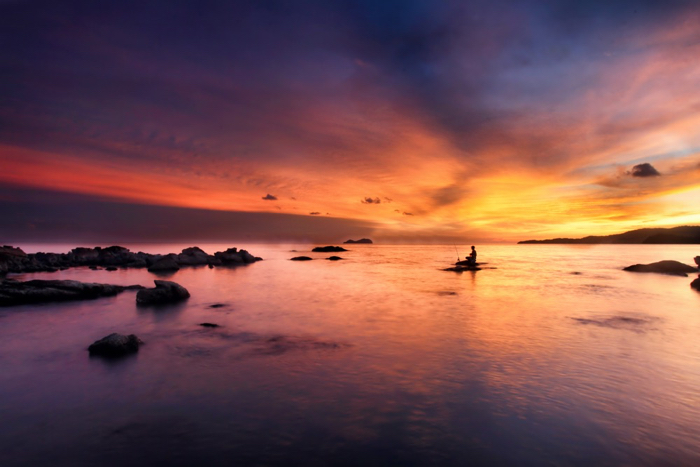
3 – Sunsets or Sunrises
In the case of both nature and urban photography, sunset or sunrise are an ideal time for photos.
Many landscape photographers will only photograph during this time. Why is that? This time of the day gives you all those warm colours in the sky, something only seen for a short time during the day.
It’s also a time when the light is easier to control, it’s less bright and comes from a lower angle.
Not every sunset is the same though, and planning needs to go into getting the best results.
- Time of year – The position of the sun changes all year round. The farther away from the equator you are, the more dramatic this shift will be. You can plan for the sun to set in a specific location for more interesting photos by using a website like suncalc.
- Sunset or sunrise – Is your location a sunset or sunrise? If it’s a sunrise you’ll need to be prepared to wake up early in the morning. Check the sunrise time and be there an hour before that time.
- Check the weather – If it’s raining, you’re not going to see a sunset or sunrise. So check the weather forecast before heading out.
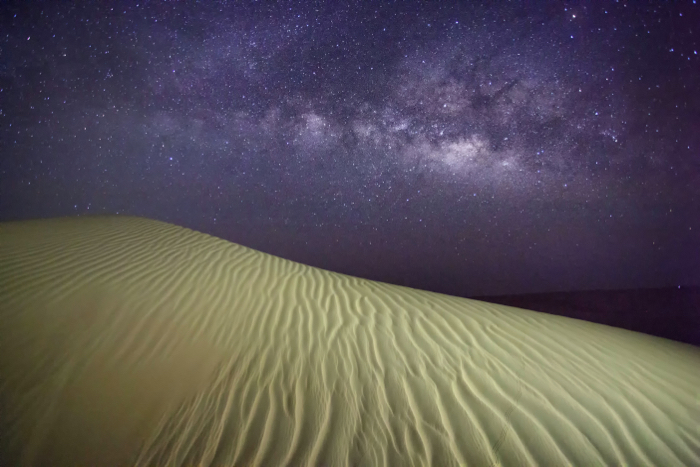
4 – Astrophotography
Camera equipment has improved a lot in recent years. Camera’s can now perform well even at higher ISO’s. This has meant photographing the stars is easier than before. Subjects like the Milky Way are becoming more and more popular.
The following are some typical subjects you can photograph in the night sky.
- Star trails – Use a program like StarStax, and create beautiful star trails across your photo.
- The Milky Way – You’ll need a wide-angle lens with a large aperture, and a camera capable of performing at high ISO. Milky Way photos can be magical, it’s an amazing genre.
- The Moon – This requires a lens with a long focal length. You can still get good results with a regular zoom of 300mm. You will have to crop the image in post processing to zoom further in on the moon. Look for events like eclipses for even more dramatic results.
- The Aurora – Visiting somewhere like Iceland is like going to Mecca for a photographer. One of the main reasons for this is the chance to photograph the Aurora. You can photograph this anywhere as long as you’re close enough to the north or south pole.
5 – The Seasons
The changing seasons can make for a dramatic photos. Capturing the seasons can mean visiting the same location many times. You can photograph the same composition during winter, spring, summer and autumn. This photo series is classic and timeless.
There will be some locations which work very well for a particular season. But they might be less dramatic at other times of the year. Use these location scouting techniques to figure out the best spot.
Types of Landscape Photography Techniques
The type of landscape photography technique you use can also lead to you have a particular style.
The following are some of the most popular landscape photography techniques out there. Read on and see if one of these fits your style.
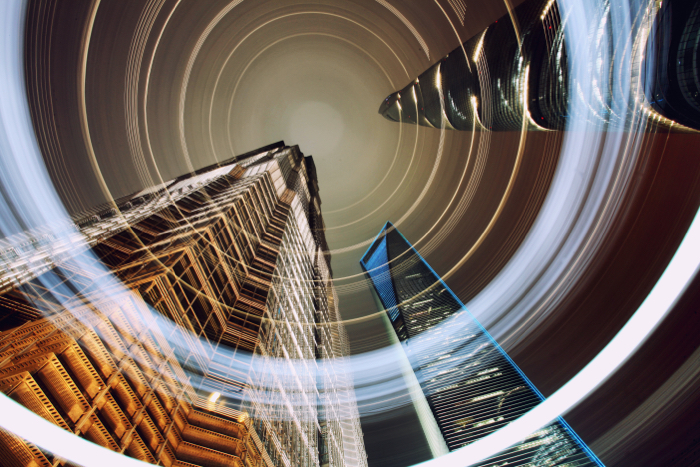
6 – Light Painting
Light painting is one of the most creative techniques out there. There is an immense amount of potential that comes with it. In fact you’re making your own image here, so you can make compelling images from any location.
The genre has many tools you can use. Keep in mind you’ll need to find a location that’s dark, and you’ll need a tripod.
- Wire wool – Place some fine grade wire wool into a metal whisk, set it on fire and spin. You’ll get dramatic results, but be careful of the fire risk.
- LED light stick – Two light sticks have transformed light painting in recent years. The Magi light, and the pixel stick are very creative tools.
- Light orbs – Place a light source on the end of a string and spin it to create light orbs.
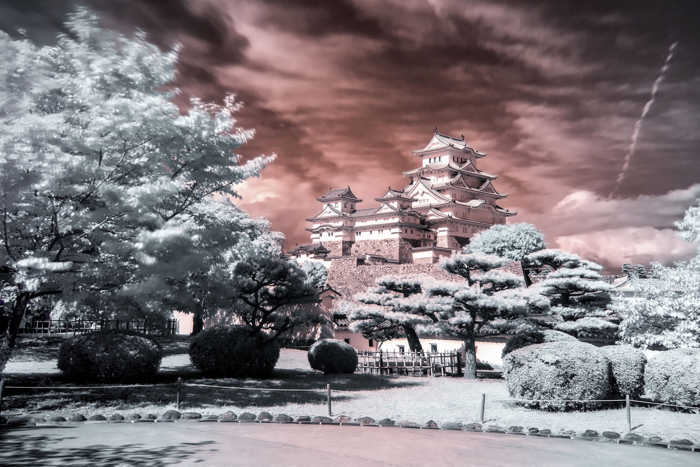
7 – Infrared
This technique is a great way of transforming your scene into a dreamscape. You’ll need the conditions to make a success of this technique. Look for a sunny day with a few clouds. At the very least you need sunshine. IR photography works best when leaves are photosynthesising.
When vegetation photosynthesises the light it emits is infra-red light. This is what you’ll use for this type of landscape photography.
You can manipulate the white balance in camera, or post-process later. IR photography will make any green vegetation appear white.
There are two main approaches to this form of photography.
- Filter – Attach this to the front of your camera to filter all light out, except infra-red light. You’ll likely need to use long exposure when using a filter.
- Adapted camera – You can get your camera body adapted so that it photographs in infrared light. It now performs like a regular camera, only the images will all be infra-red.
8 – Lensball photography
A popular form of photography in recent years involves the use of a lensball. This is a glass ball that works as an external lens optic, this can be handheld or put on the ground.
You can capture a fisheye-like image within the ball and blur out the background behind the ball.
You’ll have to overcome the challenge of the image within the ball being upside down. This is all part of the fun when using one of these spheres.
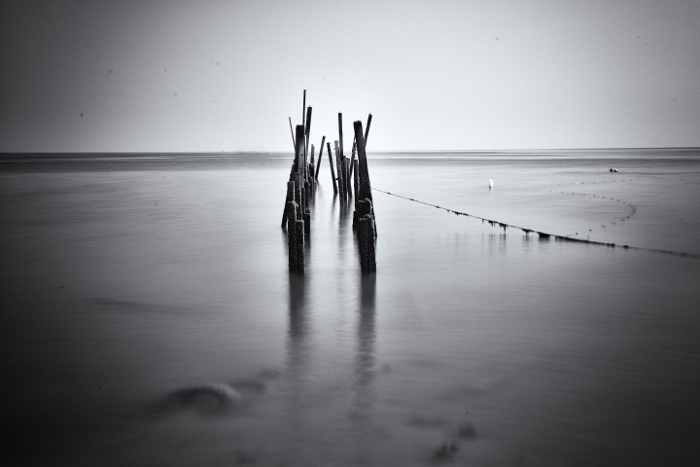
9 – Long Exposure
Another favourite of landscape photographers is long exposure. Use this to transform the moving elements within your frame.
You’ll need a tripod to carry out photographs of this type, and a strong neutral density filter.
Use an ND1000 filter if your wish to take long exposure photos during the middle of the day.
The following are popular subjects for long exposure photography.
- Water – Long exposure can flatten the sea, or make white water at a waterfall appear like silk.
- Clouds – On days that clouds move across the sky a long exposure can capture this motion.
- Light trails – Car light trails are the most popular here, but you can use boats too.
10 – Silhouettes
Silhouettes can form interesting landscape photos. These photos can be very minimalist in nature. The silhouette is your main subject.
A great landscape composition is layering silhouetted mountains against one another. Another great option is to silhouette a person or object against a sunset sky.
Different Landscape Compositions
Composition is a key element of a photo. There are several different options available here to photographers.
You can even choose one and make it your signature style.
11 – Worm’s Eye
This describes a composition where you are looking straight up, from ground level.
This works best when you’re surrounded by tall objects. Make sure those objects are close into the camera. Think of tall buildings in a city, or trees in a forest.
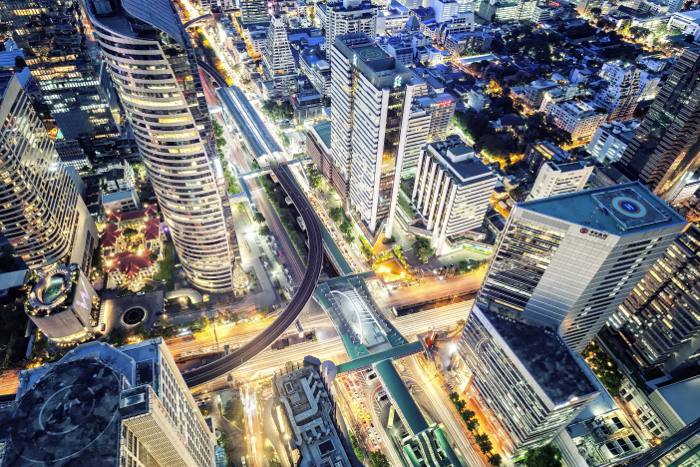
12 – Bird’s Eye
The bird’s eye view describes looking straight down. You’ll want to be taking this type of photo from an elevated position.
The world from above looks very different.
The perspective lends a minimalist vibe to your work. Roads cutting through the countryside are a good subject for this.
There are several ways to achieve a perspective like this.
- A high position – This can be an overpass looking over a road, or the viewing deck of a tall building. Getting into a higher position than your subject is all that’s required.
- A drone – Nowadays there is the option to fly a drone. This gives you a lot of freedom for your composition.
- In flight – The old approach to flying could also work. A ride on a helicopter, out of the window of a plane, or even taking a hot air balloon ride.
13 – Minimalism
Minimalist landscapes look striking. The question is how to go about achieving this look? You’ll often need to visit somewhere like a desert or a coastline for this.
Get your wide angle lens, and look for one single subject. The rest of the frame should be simple and uncluttered.
14 – Panorama
One of the most popular landscape compositions is the panoramic shot. It’s not be something everyone photographs for. The six by four composition most camera’s have means extra work to produce them.
It’s a great composition though. And it works well for many landscape photography situations be it nature or urban.
The following are the options available to produce this composition.
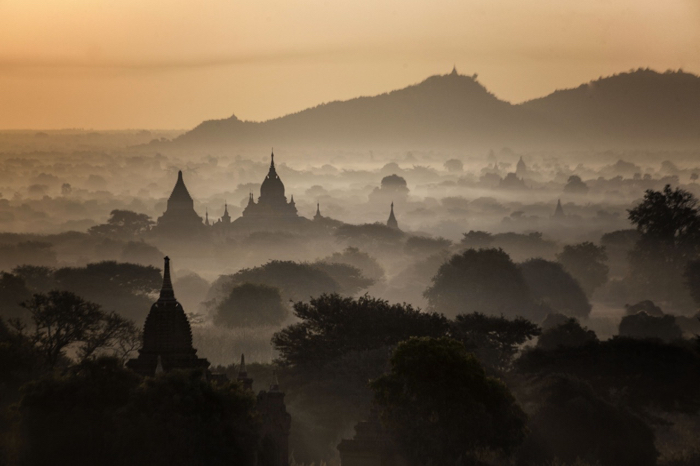
15 – The Single Subject
It’s almost a given that your photo will have the one main subject. A successful photo will cut out other areas of the photo to allow the view to focus on the message of the photo.
Choosing one subject means your photo is likely to be minimalist in nature, but what will that subject be?
You might be an urban photographer and all your photos focus on bridges as the main subject. If you’re a nature photographer, it might be a single tree.
You might even include one person in each photo. They could be looking off into the distance giving your photo a narrative.
16 – Wide Angle
Not all landscape photos are taken with a wide angle lens. Some photos involve the use of a long telephoto lens.
The long lens will be for distant cityscapes, or to focus in on some distant mountains.
The wide angle composition makes you work more for the photo though. You will need to think about what to include in the foreground elements of your photo.
Get low to the ground and let the foreground jump out of the frame with your wide angle lens. Include roads in the foreground, as they lead up to your main subject in the background.

Post Processing Landscape Photography
The final part of any photographers workflow is post processing. This is an area rich with possibilities. You can explore it more for your type of landscape photography.
Here are a few types of post-processing for landscape images.
17 – Black and White
This is one of the most popular forms of photography. It’s difficult to reproduce the results you’d get with a film camera. But with the correct post processing you can still get good results.
Avoid using the camera’s built-in black and white function. Focus on post processing a RAW file.
Black and white photography is all about contrast. You only have grey-scale to work with after-all. Look to introduce this using adobe camera raw.
You can carry out the majority of the work with Nik Silver efex. This program has a range of presets. You can use them on your photo to give it the punch a good black and white photo should have.
18 – Digital Blending
Another very popular way to edit photos is digital blending. You’ll notice HDR is not in this list of 21. That’s because digital blending is far superior. It allows you to manually blend together photos of differing dynamic range.
This will be a real game changer for most photographers. You’ll produce natural looking photos that have a real impact.
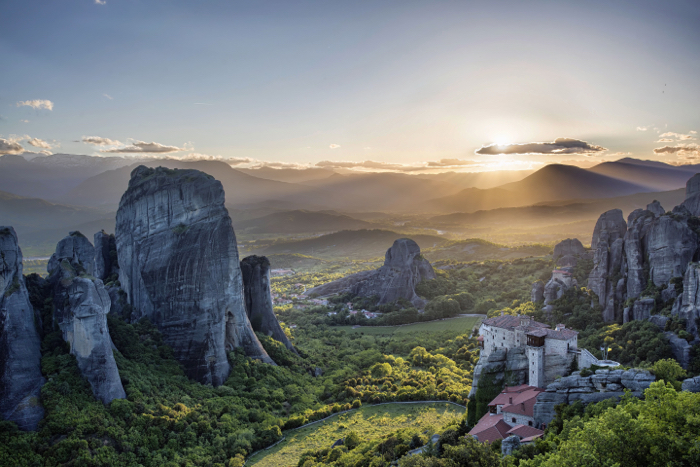
19 – Desaturating
A lot of photographers want to add to the saturation of an image to make it more colourful. Photography is all about your style though, and it can be very pleasing to de-saturate as well.
This works especially well if you have a sequence of photos that all have a uniform editing style.
You can achieve this look by reducing the saturation of your image. You might also choose to reduce the contrast as well.
Nik color efex has several filters that will allow you to create this de-saturated look if this is your aim.
20 – Time-lapse
Another type of landscape photography is time-lapse. This is a video of course, but you may want to experiment with this style.
The key is to get a sense of movement. You’re looking for places where traffic moves, people move, or clouds move.
One of the best uses of this style of recording shows day turning into night or vice versa. What’s happening here is single frame photos are stacked together to form a continuous video-like scene. The clouds and other objects are moving fast across the frame.
One of the latest styles to explore is hyper-lapse. It’s time-consuming but very creative.
21 – Presentation
You can also look to present your photos with style. In galleries photos will often have white or black borders.
You can add this to your image for online presentation. By using this with all your photos you can develop a style. You could also experiment with the vignetting effect within the image itself.
Darkening or lightening the edges of your image will draw the eye to the central area of your photo. This is likely your main subject.
Conclusion
With so many landscape photographers out there, it can be hard to stand out from the crowd. It’s especially tough given that the majority of the world’s iconic landscapes have been photographed many times before.
This article presents the many ways you can add your own style to the landscape photo you wish to take. The aim is to develop your style. When people see your work they know it’s you without even needing to look at the name tag.
Do you use any of the landscape styles listed above, or indeed a combination of the above? Is there a style you use, which isn’t on this list?
We’d love to hear from you, and see your landscape photos. Please share any thoughts or images in the comments below.
---------------------------------------------------------------------------------------------------------------------
PHOTOGRAPHY FREEBIE:
How to make money with your Photography even if you're not a Pro.
Copy & paste this link into your browser, click ENTER, and enjoy:
https://mrdarrylt.blogspot.com/2020/01/how-to-make-500-month-from-your.html
or
https://www.photography-jobs.net/?hop=darryl54
----------------------------------------------------------------------------------------------------------------------
Visit me on Facebook and post your pictures.
https://www.facebook.com/Darryl-T-363867387724297/
No comments:
Post a Comment
Note: Only a member of this blog may post a comment.